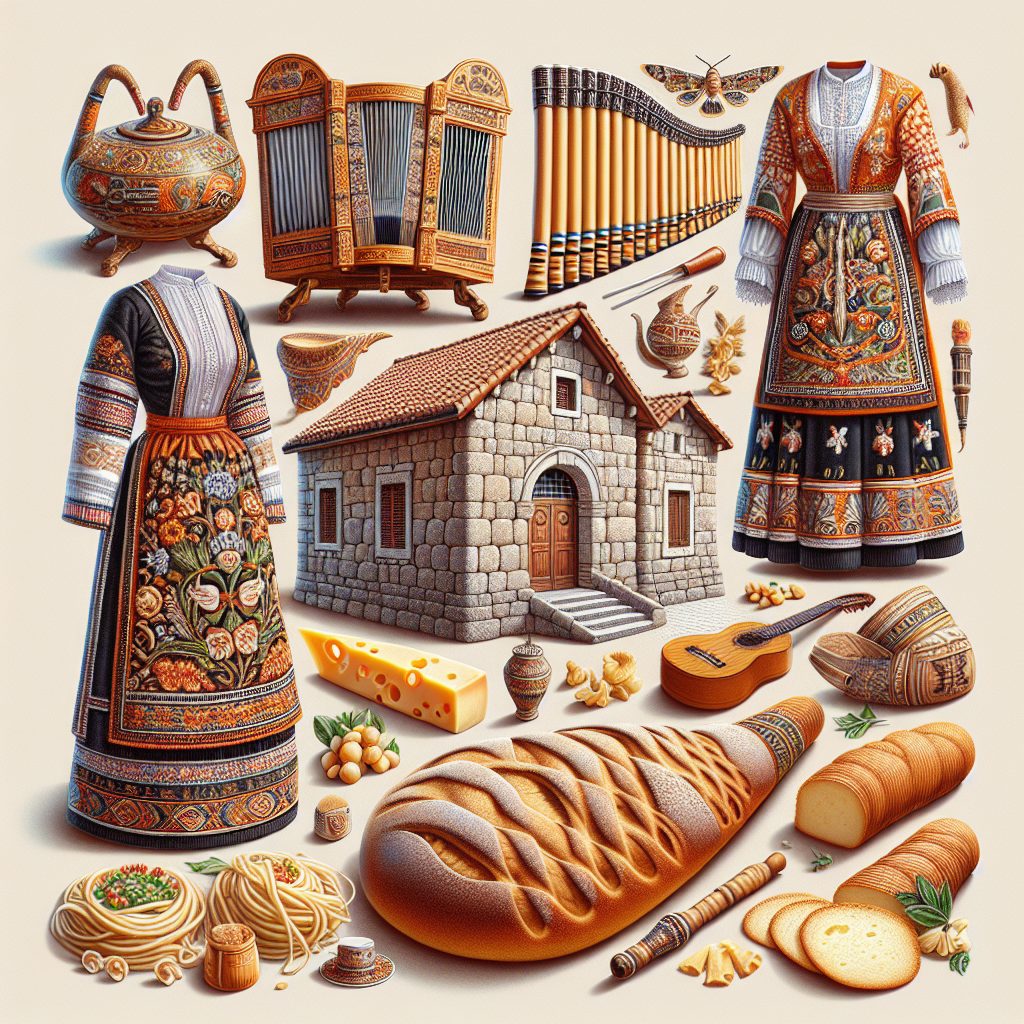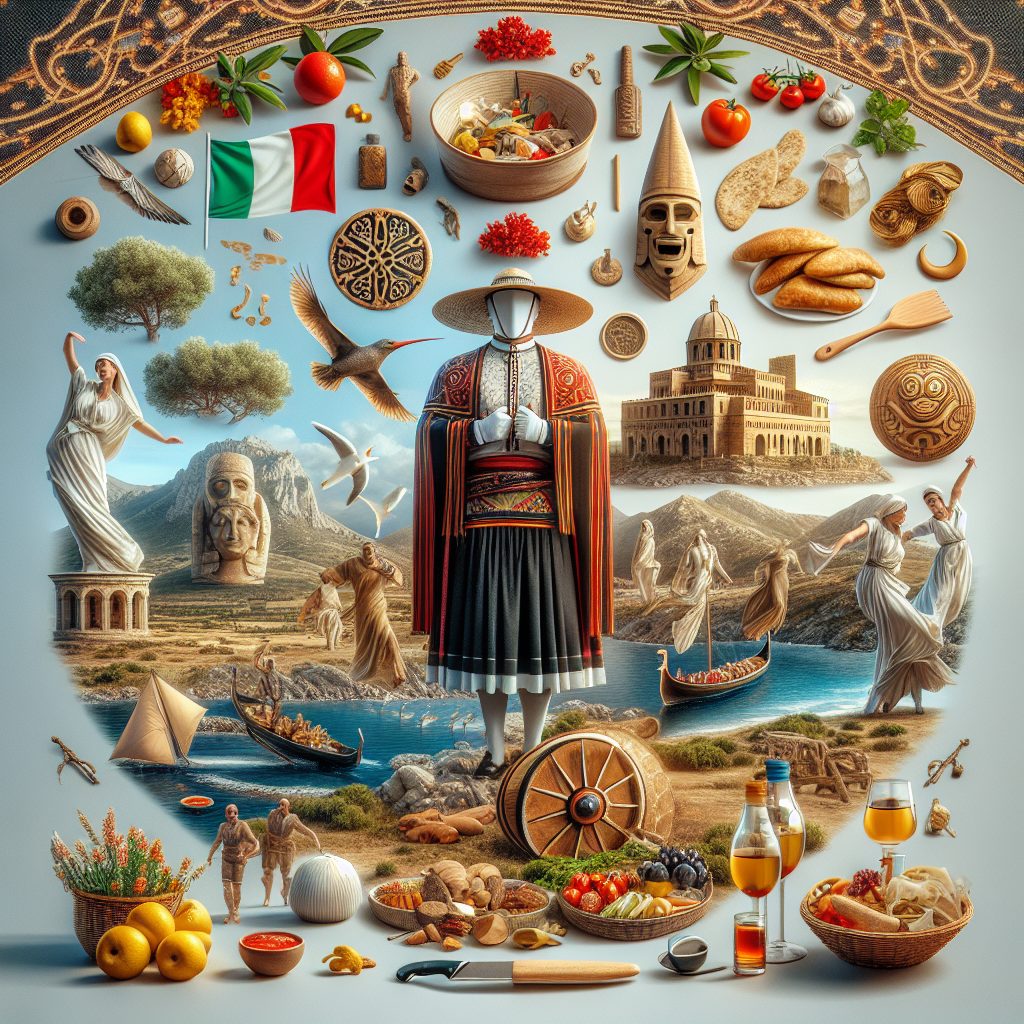The Sardinian language is a unique and fascinating linguistic expression that holds deep cultural significance for the people of Sardinia. With its roots dating back thousands of years, this ancient language has managed to survive in a rapidly globalizing world, making it a true treasure of cultural heritage. Sardinian is considered one of the oldest Romance languages, and its distinct features and influences make it a language worth exploring.
One of the key factors that sets the Sardinian language apart is its remarkable resilience in the face of societal changes. Despite the dominance of Italian and other global languages, Sardinian has managed to retain its vitality and serves as a symbol of cultural identity for the island’s inhabitants. Not only does the language allow for efficient communication among locals, but it also acts as a marker of Sardinian pride and tradition.
Moving forward, this article will delve deeper into the fascinating aspects of the Sardinian language, exploring its unique features and cultural expressions. We will unravel the factors that have contributed to its survival and discuss its ongoing impact on Sardinian society. Furthermore, we will examine the challenges that the language faces today and explore potential strategies to ensure its continued presence in the future. Stay tuned to discover the rich tapestry of Sardinian language and its cultural significance.
Key Takeaways
1. Sardinian language serves as a strong cultural expression and identity marker for the people of Sardinia, Italy. It is recognized as one of the oldest spoken languages in Europe, dating back to ancient times and carrying historical weight.
2. The Sardinian language encompasses various dialects across the region, reflecting the island’s diverse history and geographical separation from mainland Italy. These dialects contribute to the rich linguistic tapestry unique to Sardinia.
3. The preservation of the Sardinian language faces challenges such as globalization, Italian dominance, and the influence of mass media. Efforts are being made to safeguard and promote the language through education, legislation, and cultural initiatives.
4. Sardinian language plays a significant role in various cultural expressions, including literature, music, and traditional festivities. It serves as a means of conveying and preserving Sardinian traditions, folklore, and storytelling.
5. The cultural expressions associated with the Sardinian language reinforce a sense of community, intergenerational connections, and pride among the Sardinian people. These expressions contribute to the unique and distinct cultural identity of the island.
Exploring the Cultural Expressions of Sardinian Language: How Does Sardinian Language Influence the Local Culture?
The Significance of Sardinian Language
Sardinian is a unique and ancient language spoken by the inhabitants of the Italian island of Sardinia. With its rich history and distinct linguistic features, Sardinian language plays a crucial role in shaping the island’s cultural expressions. Let’s delve into the various aspects of Sardinian language cultural expressions and explore their significance.
Folklore and Traditional Tales
One fascinating aspect of Sardinian language cultural expressions is the abundance of folklore and traditional tales. Passed down through generations, these stories are often told in Sardinian, preserving the language’s traditional vocabulary and linguistic charm. From tales of legendary heroes and mythical creatures to moral fables, Sardinian folklore offers a unique glimpse into the island’s cultural heritage.
Music and Dance
Music and dance are integral parts of Sardinian culture, and the Sardinian language finds its prominence in these expressions. Traditional Sardinian songs, known as “cantu a tenore,” feature harmonic singing styles, and the lyrics are typically sung in the native language. Sardinian dances, such as the “ballu tundu,” often accompanied by ancient musical instruments, further demonstrate the intertwining of the language with the island’s vibrant cultural traditions.
Art and Craftsmanship
The Sardinian language also leaves its mark on the island’s art and craftsmanship. From ancient murals and frescoes adorned with Sardinian inscriptions to intricately woven textiles featuring traditional designs and patterns, Sardinian artists and artisans often incorporate their native language into their creations. These artistic expressions not only showcase the linguistic heritage but also serve as a means of preserving and promoting the Sardinian identity.
Culinary Delights and Traditional Festivals
When exploring Sardinian language cultural expressions, it is impossible to overlook the island’s culinary delights and traditional festivals. Sardinians take pride in their local cuisine, which often carries names and descriptions rooted in the Sardinian language. From the famous “culurgiones” (a type of stuffed pasta) to the aromatic “sa fregula” (semolina pasta), each dish tells a story of Sardinian gastronomy and linguistic influence. Additionally, traditional festivals, such as “Sa Sartiglia” and “Cortes Apertas,” often feature ceremonial chants and lively performances in the Sardinian language, adding a distinct cultural touch to these celebrations.
Sardinian Language Revitalization Efforts
Despite its rich cultural significance, the Sardinian language faces challenges as it coexists alongside Italian and other dominant languages. However, various initiatives and organizations have been working tirelessly to revitalize and promote the use of Sardinian. By preserving the language, these efforts aim to ensure the continuity of Sardinian language cultural expressions for future generations.
Embracing the Cultural Expressions
Discovering the cultural expressions of the Sardinian language can be a rewarding experience. Whether through exploring ancient folklore, enjoying traditional music and dances, admiring local art and craftsmanship, savoring authentic Sardinian dishes, or participating in vibrant festivals, embracing the cultural expressions rooted in the Sardinian language allows us to connect with the soul of this magnificent island.
Ready to delve into Sardinian language cultural expressions? Here are some tips to get you started:
- Begin by familiarizing yourself with Sardinian folklore and traditional tales. Look for books, websites, or local storytellers who can introduce you to the captivating world of Sardinian mythology.
- Attend a traditional Sardinian music and dance performance. Immerse yourself in the enchanting melodies and rhythmic movements that reflect the cultural richness of the island.
- Visit local art galleries and craft workshops to witness the unique fusion of Sardinian language and artistic expressions. Engage with artisans and learn about their inspirations and techniques.
- Embark on a culinary journey and taste traditional Sardinian dishes. Pay attention to the language used to describe each delicacy and appreciate the cultural stories behind the flavors.
- Plan your visit to coincide with the vibrant Sardinian festivals. Immerse yourself in the lively atmosphere, join the celebrations, and experience the cultural expressions firsthand.
- Support Sardinian language revitalization efforts by attending language classes, joining language exchange programs, or contributing to organizations dedicated to preserving the language.
Frequently Asked Questions
1. What is the Sardinian language?
The Sardinian language is a Romance language spoken primarily in the Italian island of Sardinia. It is considered one of the most ancient languages in Europe and has evolved independently from other Romance languages.
2. How many people speak Sardinian today?
Approximately 1.2 million people speak Sardinian today, mainly in Sardinia. However, the number of speakers has been declining due to the influence of Italian and globalized culture.
3. Is Sardinian recognized as an official language?
Sardinian is not officially recognized as a language, but rather considered a “language of interlocution” by the Italian government. However, efforts are being made to achieve official recognition and preserve its cultural importance.
4. What cultural expressions are unique to the Sardinian language?
Sardinian language cultural expressions include traditional folk music, poetry, storytelling, and festivals. These expressions play a significant role in preserving the island’s rich cultural heritage.
5. Can non-Sardinians learn the Sardinian language?
Absolutely! Anyone with an interest in the Sardinian culture and language can learn it. There are resources available online, language courses, and immersion programs that can help non-Sardinians learn and appreciate this unique language.
6. How similar is Sardinian to Italian?
Sardinian and Italian are both Romance languages, so they share some similarities. However, Sardinian has its distinct grammar, vocabulary, and pronunciation, making it a unique language on its own.
7. Are there any efforts to preserve the Sardinian language?
Yes, there are ongoing efforts to preserve and promote the Sardinian language. Cultural associations, schools, and institutions are working towards revitalizing and protecting this valuable linguistic heritage.
8. What is the importance of preserving the Sardinian language?
Preserving the Sardinian language is crucial for maintaining the island’s identity, cultural diversity, and historical legacy. It allows the transmission of traditional knowledge, traditions, and values across generations.
9. Can Sardinian be considered an endangered language?
Yes, Sardinian is classified as an endangered language by UNESCO. The younger generations are increasingly choosing to speak Italian, resulting in a decline in the number of proficient Sardinian speakers.
10. Are there any literature or artistic works written in Sardinian?
Yes, numerous literature and artistic works are written in Sardinian. Many Sardinian authors have contributed significant works, including poetry, novels, plays, and even contemporary music.
Final Thoughts
The Sardinian language and its cultural expressions are invaluable treasures that deserve recognition and preservation. They not only represent the unique identity of Sardinia but also contribute to the diversity of Europe’s linguistic heritage. It is crucial for individuals, communities, and governments to come together in their efforts to safeguard, promote, and celebrate the Sardinian language. By supporting linguistic diversity, we enrich our understanding of human culture and connect with the roots that define us.
As we navigate through an increasingly globalized world, let us remember the importance of cherishing and nurturing our linguistic and cultural diversity. The Sardinian language and its cultural expressions serve as a reminder of the richness and depth that can be found within each unique linguistic community. By valuing and preserving these cultural treasures, we ensure a brighter and more authentic future for generations to come.






